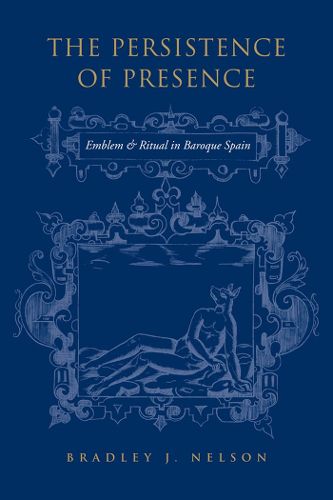Readings Newsletter
Become a Readings Member to make your shopping experience even easier.
Sign in or sign up for free!
You’re not far away from qualifying for FREE standard shipping within Australia
You’ve qualified for FREE standard shipping within Australia
The cart is loading…






The Persistence of Presence analyzes the relationship between emblem books, containing combinations of pictures and texts, and Spanish literature in the early modern period. As representations of ideas and ideals, emblems are allegories produced in a particular place and time, and their study can shed light on the central cultural and political activities of an era.
Bradley J. Nelson argues that the emblem was a primary indicator of the social and political functions of diverse literary practices in early modern Spain, from theatre to epic prose. Furthermore, the disintegration of a unified medieval world view left many seeking the kinds of deep knowledge that could be accessed through symbolic pictures, increasing their cultural significance. In this detailed examination of emblem books, sacred and secular theatre, and Cervantes’ critique of baroque allegory in Los trabajos de Persiles y Sigismunda, Nelson connects the early history of emblematics with the drive towards cultural and political hegemony in Counter-Reformation Spain.
$9.00 standard shipping within Australia
FREE standard shipping within Australia for orders over $100.00
Express & International shipping calculated at checkout
The Persistence of Presence analyzes the relationship between emblem books, containing combinations of pictures and texts, and Spanish literature in the early modern period. As representations of ideas and ideals, emblems are allegories produced in a particular place and time, and their study can shed light on the central cultural and political activities of an era.
Bradley J. Nelson argues that the emblem was a primary indicator of the social and political functions of diverse literary practices in early modern Spain, from theatre to epic prose. Furthermore, the disintegration of a unified medieval world view left many seeking the kinds of deep knowledge that could be accessed through symbolic pictures, increasing their cultural significance. In this detailed examination of emblem books, sacred and secular theatre, and Cervantes’ critique of baroque allegory in Los trabajos de Persiles y Sigismunda, Nelson connects the early history of emblematics with the drive towards cultural and political hegemony in Counter-Reformation Spain.